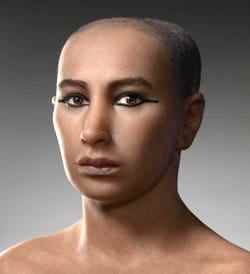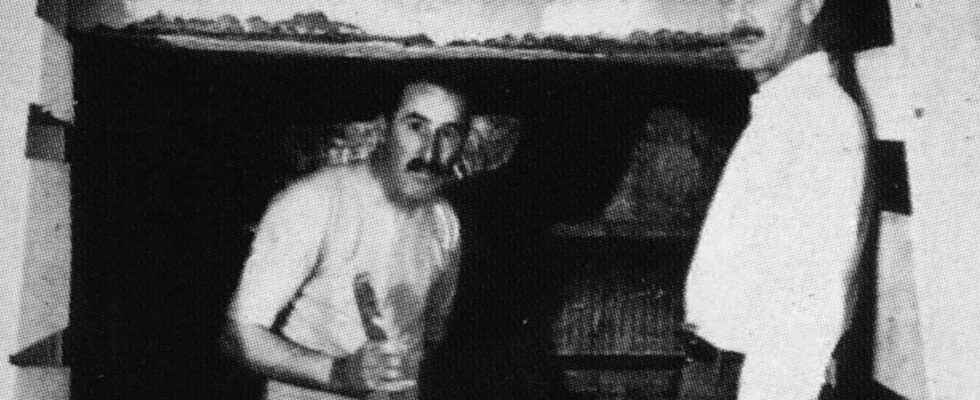The reign of Pharaoh Tutankhamun lasted only nine years. He is however one of the most famous because of the discovery of his almost intact tomb on November 4, 1922 by Howard Carter. It was 100 years ago!
Tutankhamun’s tomb was not discovered until November 4, 1922 in the Valley of the Kings by archaeologist Howard Carter. It reveals unsuspected Egyptian treasures whose exemplary conservation contributes to the myth of Tutankhamun. More than 5,000 objects were discovered in the burial chamber, including a succession of four chapels and several sarcophagi which protected the mummy of the young king. The fame of the young pharaoh also comes from the “curse” which pursues all the people who participated in the opening of his tomb in 1922. Among the dead suspected of the “curse of the pharaoh”, there is that of Lord Carnarvon on April 5, 1923, then in May that of Professor La Fleur, another archaeologist, as well as that of the financier George Jay Gould.Several other deaths follow one another without anyone ever finding a plausible explanation.It should be noted, however, that Howard Carter died of natural causes only in 1939 To learn more about the most famous pharaoh of our time, here is his story:
Born around 1345 BC. J.-C. probably in Akhetaton in Egypt, Tutankhamun is part of the XVIIIth dynasty of pharaohs of ancient Egypt. His father is Pharaoh Amenhotep IV; his mother is still an unknown mummy. During his reign, Tutankhamun put an end to the monotheism installed by his father and remained in power for a brief period of nine years. At his birth, his father Amenhotep IV (Akhenaton) gave him the baptismal name Tutankhaton (“Aton’s reflection”) in homage to the unique cult of Aten, the sun god. When Amenophis IV died, his sister Merytaton would have reigned for a few months. Then, Tutankhamun became pharaoh around the age of nine. His accession to the throne in this troubled period is therefore the beginning of a new era.
His tutor Aÿ has an important influence on the young pharaoh. Worshiping the god Amon Rê, he renames him Tutankhamun (“Reflection of Amon”) and thus puts an end to the monotheistic cult of Aton. He is also at the origin of the return of the official religion which reintroduces the practices polytheists. Tutankhamun apparently married his sister, Ankhesenamon to legitimize his rule. The young woman was potentially also the wife of their father. Two little girls who died at birth were born of this union. Tutankhamun dies at the age of 18 probably as a result of an accident around 1327 BC. The young pharaoh is buried according to the royal funerary rites of this time which allowed an excellent preservation of his mummy.

In 2005, under the direction of Zahi Hawass, secretary general of the Supreme Council of Egyptian Antiquities, and the National Geographic Society, an image representing the pharaoh Tutankhamun was made public. This facial reconstruction was made from the skeleton of the mummy of the young king discovered on November 4, 1922. It is therefore a possible portrait of Tutankhamun at the age of 19. The pharaoh’s mummy has been widely studied over the past century. DNA studies, for example, have made it possible to better know his genealogy and to understand from which pathologies suffered the young king. He was notably suffering from malaria and probably from sickle cell disease. But it was an accident that would have caused his death.
On the occasion of the 100th anniversary of the discovery of the tomb of Tutankhamun, many events are organized. To celebrate the incredible archaeological discovery made by Howard Carter on November 4, 1922, Arte is broadcasting a documentary on Saturday evening entitled “Tutankhamun, the rediscovered treasure”. The television channel details in the form of an investigation all the information transmitted by the funerary treasure of the young pharaoh who died too soon. The 5,000 objects discovered in the tomb of the Valley of the Kings in 1922 still fascinate the specialists who share their research with us. You can watch the Arte report now:
- 1335 to 1327 BC. J.-C.: The reign of the young Tutankhamun
- Tutankhamun enters the line of the Egyptian pharaohs. Very young, he was unable to exercise power, which benefited General Horemheb. The latter will push the King to restore the cult of Amon and to return to the capital of Thebes. Tutankhamun will marry his sister and die prematurely without an heir. His reign was insignificant for the time, but when Howard Carter discovered his tomb in 1922, his name would be etched in everyone’s memory.
- November 4, 1922: Discovery of the tomb of Tutankhamun
- The English archaeologist Howard Carter and his team manage to clear a stone staircase leading down to the tomb of the Egyptian ruler. Carter will wait several days before reaching the tomb. The smallest of the tombs in the entire Valley of the Kings, Tutankhamun’s tomb has remained famous because all the treasures it contained have been fully preserved.
